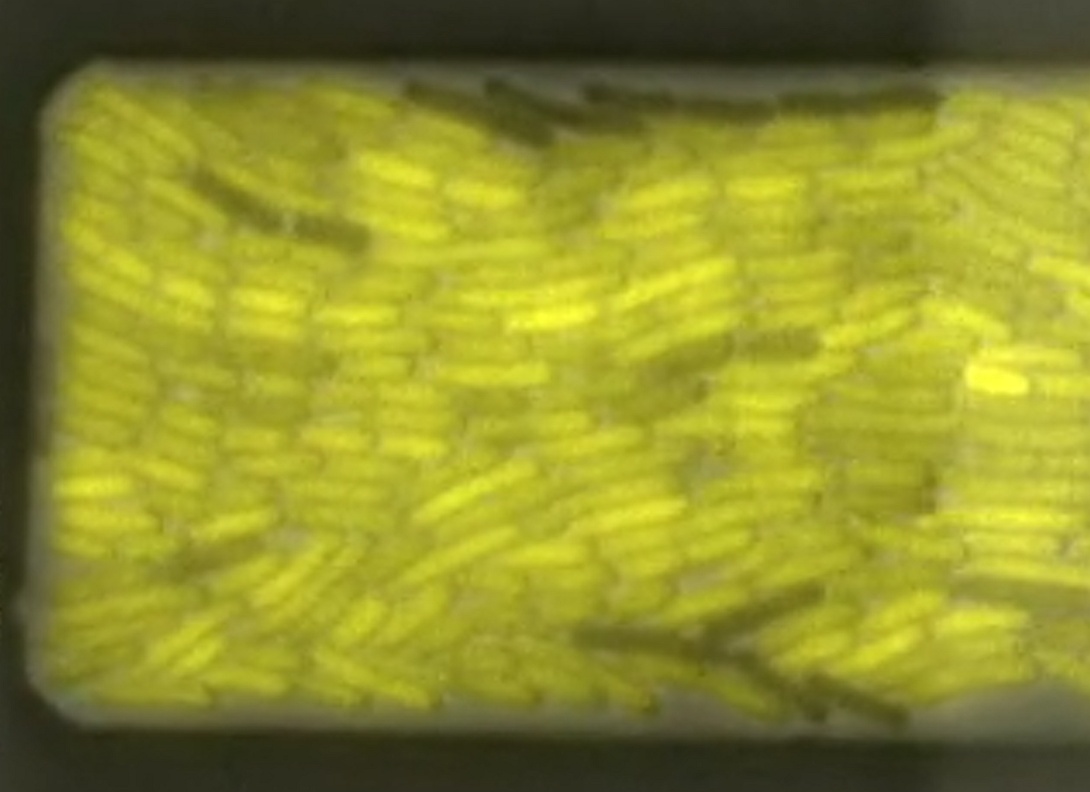CRISPR-Cas is the fast growing gene editing technique well known for its potential to cure genetic traits in the future. But its origins lie in the protective system of bacteria against invading viruses. This defense mechanism entails the adaptation of the cells by incorporating a piece of the invader’s DNA in the CRISPR array of its own DNA for reference. After a new invasion, CRISPR proteins interfere by recognizing and cutting the hostile DNA, thus clearing the cell of the invader.
Single cell studies
While these processes have been studied on a population level, the individual cellular variability is unknown. In a unique cooperation, researchers of the TU Delft led by Stan Brouns and the group of Sander Tans at AMOLF, complemented by theorists from Wageningen University within the group of Christian Fleck, have studied the second step in the CRISPR-Cas system, interference to clear the cells of invading DNA, on a single cell level.
The researchers used a microfluidic device and time-lapse microscopy to follow individual cells in a population of Escherichia coli across multiple generations while monitoring invader DNA degradation and protein expression. The time-lapse videos that are published with the paper show individual cells growing and dividing, lighting up in fluorescent yellow when they are infected with foreign DNA and returning to dark after the DNA has been cleared.
They studied a population that had already adapted to the invading DNA, which means the CRISPR system had already incorporated a bit of this foreign DNA in its own. They also exposed another population to a slightly different invader containing a PAM-mutation and monitored the so-called primed CRISPR adaptation where the bacteria first have to learn to recognize the slightly different invading DNA.
Surprising results
The results are unexpected in a number of ways. When the cells had learned in advance to recognize the invading DNA, that is after standard adaptation, all cells were able to clear a new invasion quickly. But remarkably, in primed CRISPR adaptation some cells cleaned up the invaders quickly but others were much slower to react. “This is the first time this distribution in clearance times has been observed,” says AMOLF’s Sander Tans. “When you look at the entire population, you only measure the average clearance time, not this remarkable distribution.”
Using a computer simulation, the researchers were able to determine that the rate limiting step is most likely the binding of the mutated invader DNA to the CRISPR protein, which in this case is the Cascade protein complex. “Again this is remarkable,” says Tans. “DNA binding during the interference step is much less complex than for example spacer integration during the adaptation step, where invader DNA is incorporated in the bacterial DNA. But the simulation data clearly show that binding rather than integration is the variable step.”
Bet-hedging
In addition, the researchers found that related cells that form by cell division and are thus sisters or offspring, show comparative clearing times. They also find, less surprisingly, that higher levels of CRISPR protein lead to faster clearance. The researchers speculate that the cells within a population exhibit a form of bet-hedging, where subpopulations specialise in a certain task. In this case, one subpopulation has invested energy in expressing CRISPR protein so that they can quickly clear invaders. But a subpopulation that does not invest in expressing protein can grow faster at times when no invaders are present. “It is a continuous process of investment in growth or defense,” says Tans.
While a long way from gene editing studies, the present research can have important implications, says Tans. “Our results show that it is important to take cell variability into account. For gene editing studies and future gene therapies it is important to realise the possibility that not all cells show equal adaptation and interference.”
This press release was published on the AMOLF website on May 9, 2022.
